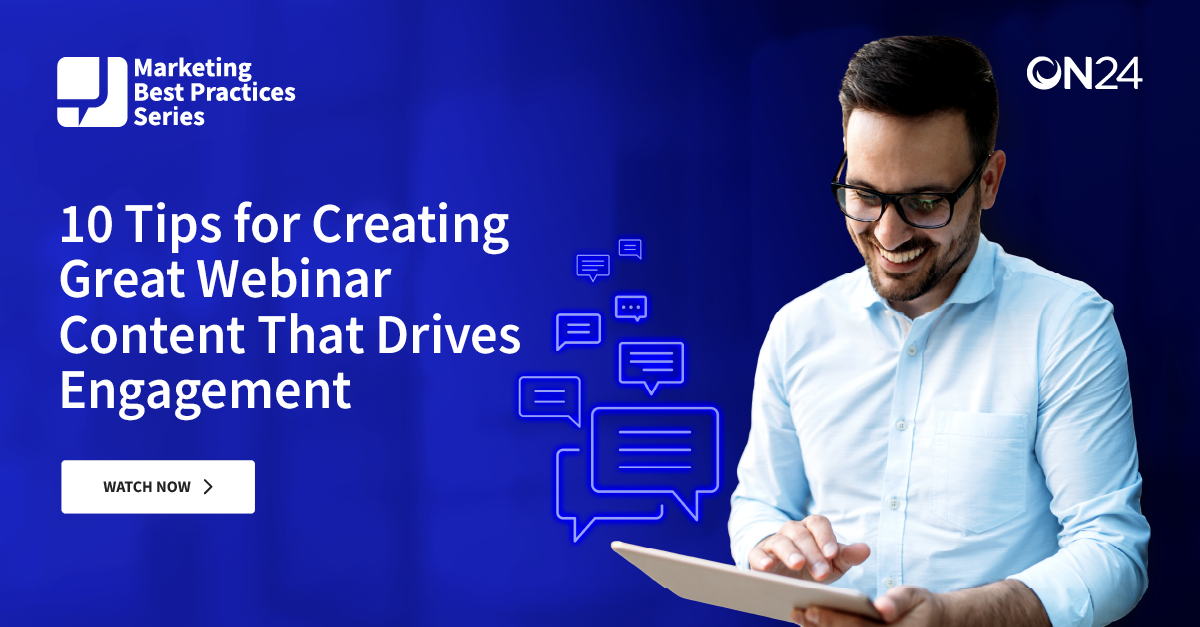The most valuable commodity for any marketer is audience attention. In a landscape where attention is short and demand for it is high, every second of engagement has to be earned.
But how can digital marketers earn this attention and engagement?
To show you, we’ve put together this guide detailing 12 audience engagement strategies you can use to improve and measure attention-driven engagement. Read on to learn more.
What is Audience Engagement?

Audience engagement measures how an audience connects with a business or brand. It takes many forms, from reading blogs, watching videos, commenting on social media posts, entering competitions, and leaving product reviews.
There are degrees to which an audience can engage with a business; generally speaking, the more engaged they are, the more likely they are to become or remain loyal. This is why so many businesses focus on audience engagement as a key marketing metric — it directly impacts brand awareness, customer retention and revenue.
Audience Engagement Strategies

Because audience engagement is such a broad measure, there are many ways to work towards increasing it. These are some of the best audience engagement strategies for your engagement marketing campaigns.
Know Your Audience
Understanding your audience’s demographic makeup and interests is a key first step in boosting engagement. This information will help you identify engagement strategies likely to influence them, tailored around addressing their needs and preferences. Often, these data points include:
-
- Age
- Gender
- Geographic location
- Occupation
- Level of education
However, for B2B marketers, firmographics, the factors and characteristics that make up an organization, are just as, if not more, important. Firmographics can include:
-
- Company size
- Industry
- Location
- Annual revenue
- Employee titles
Combining demographic and firmographic data can help paint a more accurate picture of audiences. With this information — often collated in a customer relationship management (CRM) platform — sales and marketing teams can create account-based marketing campaigns, create content that addresses pain points and target personalities on buying committees and much more.
Use Data-Driven Insights
Data allows you to understand your audience’s makeup and provides insights into what kind of content — from topics to formats — they’re most likely to engage with. This can help you create engagement campaigns that deliver the right content at the right time in the most preferred medium.
Marketers can collect these insights through a variety of methods. Webinars, for example, provide a reliable resource for high-quality first-party data. Marketers can also refer to data from historical marketing campaigns, website analytics, polls, surveys and more.
With the right data, teams can adopt the content in an engagement strategy to suit the audience’s needs while simultaneously providing teams with an opportunity to measure engagement for further optimization.
Content Personalization and Segmentation
Accurate data-led insights into your audience can also allow you to segment them into groups based on shared traits. This makes it easier to create personalized content experiences that target segment-specific pain points, demographics or interests.
And personalized content delivers. According to the ON24 Digital Engagement Benchmarks report, personalization helped businesses to double conversion rates for meetings book, boost CTA engagement by 68% and nearly quadruple demo requests.
So, it’s no surprise that delivering personalized content to segmented audiences is more likely to be impactful, resonating with each audience’s specific needs, preferences or circumstances.
Interactive and Immersive Content
While practically all types of content can prompt engagement, some types tend to perform better than others. Interactive content that encourages active participation is one of those types and comes in many forms, including polls, webinars, virtual breakout rooms and live virtual events.
Integrating interactive content into your broader content funnel is a great way to get your audience engaged before leading them to other resources. Hosting a webinar that includes a live Q&A session can give you the opportunity to interact with your audience directly and tell them where to find more information, for example. Our comprehensive content marketing guide provides actionable advice on building out your content marketing strategy to encourage audience engagement.
Use social media to drive engagement
Social media platforms are built to facilitate two-way interactions, which makes them perfect for businesses looking to boost engagement with their audience. To maximize the impact of your social media marketing, focus on using different content types covering diverse topics.
This ensures your social feed offers something for every audience segment and member, whatever their interests or preferences are, increasing engagement across your entire audience base. And remember that videos on social media are particularly effective; they can generate up to 1,200% more shares than text or image posts.
Email marketing strategies for engagement
Email campaigns are a great way to communicate directly with your audience, providing plenty of opportunities for engagement. They can achieve diverse objectives, from telling customers about new product updates to advertising upcoming events.
The key to generating engagement through email marketing is to take a sophisticated approach to personalization. Use your audience segments to create distinct mailing lists and aim to send only emails that will provide value to each one.
For example, new customers might be most interested in receiving content about basic product features, while veteran customers could get more value from hearing about a webinar you plan to cover how to get the most from the product.
Now, segmenting, personalizing and creating emails at scale is a particularly difficult task for any marketing team. One way marketers can get around the issue of email scale is through the use of generative AI.
AI tools, like the AI-powered Analytics and Content Engine offered by ON24, can provide marketers with an easy way to both segment audiences and draft personalized emails that can help continue the conversation.
Continuous improvement through feedback
Driving increased engagement rates among your audience isn’t simple, and it’s particularly difficult to achieve at scale. To improve your strategy, remember to adopt an iterative approach.
An iterative approach requires you to regularly stop, review content performance, measure performance against your goals and consider new learnings.
For example, if you’re optimizing a webinar for poll responses, review your poll response to attendee ratio, poll drop off throughout the event and how often your host refers to or promotes the poll during the webinar.
Every piece of content you put out provides a valuable opportunity to learn, so pay attention to the data to see how it compares to previous efforts. Over time, you’ll better understand how to engage with each of your audience segments.
How To Measure Audience Engagement

Increasing audience engagement is one thing, but if you’re not measuring it accurately, you won’t know where your strategy is working and where it’s falling short. Follow these tips to effectively measure your audience engagement, making sure you have all of the data you need to improve your strategy in the future.
Setting Clear Engagement Goals
To measure the effectiveness of your audience engagement efforts, you first need to establish clear goals. These will vary depending on your overall business objectives, the channels involved in your campaign, and the type of content you’re using.
If your overall business objective is to increase the take-up of a newly launched product feature, for example, your engagement goal might be to drive more traffic to the product feature webpage or booking demos for the specific product.
This could also feed into channel-specific aims, like generating a certain number of pageviews on a blog post discussing the feature, increasing click-throughs from emails or driving traffic to a specific landing page.
To set up these goals, sit down with your domain expert and analytics team and work together to agree on what you’d consider an engagement goal. For example, is it a form fill? A button click? Time on page?
Once you have your engagement goals in place, establish a benchmark to see what the typical activity around this engagement point looks like. After that, think about what you’d like to see from your campaign and start measuring.
Using Analytics Tools
You can use many useful analytics tools to measure your engagement strategy’s success. These can include tools like Google Analytics for website engagement, each social media platform’s proprietary analytics center for social engagement, and email marketing software like Adobe Marketo Engage for email engagement.
Make full use of each analytics tool at your disposal and compile all of the data in a central dashboard to provide a complete overview of audience engagement.
Engagement Metrics to Watch
Since audience engagement takes many forms, the best measurement strategies track diverse engagement metrics across all channels. For website engagement, these metrics can include:
-
- Page views
- Average session time
- Exit rate
For social media, consider:
-
- Likes
- Shares
- Comments
- Click-through rate
For emails, consider:
-
- Open rate
- Read rate
- Clickthrough rate
Additional marketing channels might introduce new metrics, too. If webinars or virtual events play a key role in your marketing campaign, for instance, webinar metrics like average attendees, viewing time and number of engagements taken — like interacting with polls or booking a meeting — will be important.
Analyzing Audience Behavior
Tracking fundamental engagement metrics like the ones listed above is crucial, but it only tells you the “what” of engagement. Going beyond surface-level metrics by analyzing audience behavior more in-depth can also illuminate the “why.”
Several notable ways to track audience behavior in detail include analyzing engagement metrics by audience segment or using website tracking technologies like heatmaps to see how users interact with content.
Leveraging Surveys and Feedback
Finally, consider how you can supplement the data you collect through analytics tools with direct feedback from your audience to create a more rounded image of engagement performance. Surveys, polls, and one-on-one sessions are all useful ways to get this information.
For example, if you’ve just hosted a webinar, put together a post-webinar survey that asks direct questions like ‘Would you like to learn more about this topic?’ and ‘How did the session compare to your expectations?’. The answers from your audience, combined with the hard data from your webinar analytics platform, will help you understand how to improve your approach next time.
Driving more audience engagement is at the center of both customer acquisition and retention success, but it can be difficult to manage at scale in multichannel campaigns. Use the ON24 Intelligent Engagement Platform to bring all of your efforts together and take advantage of content personalization tools, deep audience analytics, and AI-powered automation features.


